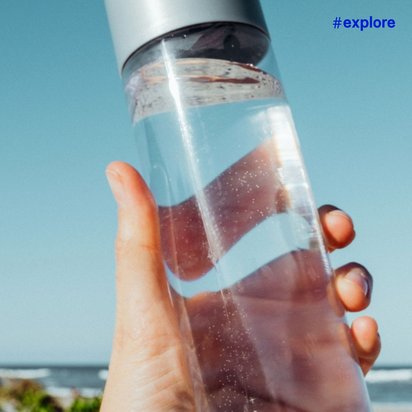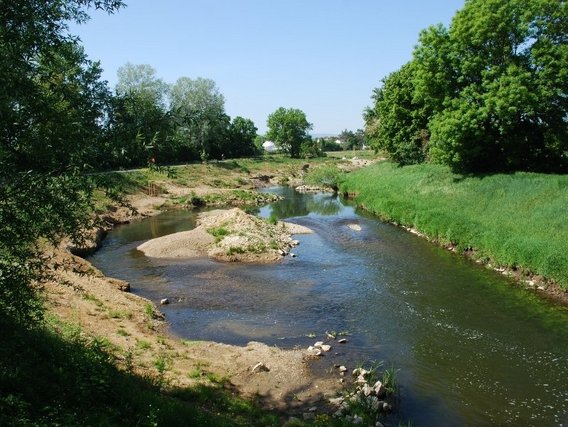Water
Water for the world
Where will we get enough drinking water from in the future?

Water
Where will we get enough drinking water from in the future?

06 March 2025
Without water, none of us would exist. H2O is the elixir of life for humans, plants and animals. But the global demand for water is growing by one percent per year. At the same time, climate change is taking an increasing toll on this precious resource. How can our water supply be secured and improved?
You turn on the tap, and out gushes the water: What seems like such a matter of course in our kitchens and bathrooms cannot by any means be taken for granted everywhere the world. One in four people on our blue planet has no access to safe drinking water. According to the United Nations, half of us – that’s around four billion people – live in regions where water is very scarce for at least one month a year.
In no other country in the world are more people affected by this shortage of water than in India. 18 percent of the world’s population lives there – now more than in China. And yet, this country, which borders Pakistan, Nepal and Myanmar, has only four percent of the world’s freshwater reserves. This is a major problem that the Indian government wants to tackle by being sparing, among other things. Industrial companies that consume more than 100 cubic metres of groundwater per day are under obligation to reduce their consumption by 20 percent within three years, either by making their processes more efficient or by recycling their wastewater for industrial use.
These cost-cutting measures are being supported by the experts from TÜV NORD India. The experts are carrying out tests in particularly water-intensive industries – from cement production to breweries, from the steel industry to furniture production. In doing so, they are systematically determining how much water the companies actually consume and how much H2O can be saved and exactly where consumption can be reduced. “Experience shows that our water audits reveal ways reducing water consumption by at least five to ten percent,” says Manojkumar Borekar from TÜV NORD India.
In Germany, everyone still has access to enough water, always and everywhere. And yet, the consequences of climate change have long been making themselves felt in Germany, as in other places, with more frequent and heavier rainfall events, rising temperatures and long periods of drought.
The persistent drought between 2018 and 2020 forced agriculture to contend with crop failures, and tinder-dry forests fell victim more easily to the depradations of bark beetles and fires. This was especially true for Brandenburg, one of the German Länder with the most water and, at the same time, the least precipitation. To counteract low water levels in rivers, lakes and groundwater, the state government at the time came up with a low water concept (see also info box) in 2021. The declared aim was to reshape the landscape in Brandenburg, which is designed for ease of drainage, and to control water use in such a way as to avoid water shortages as far as possible. The implementation of the low water concept will take five years to complete, and the project management has been taken over by experts from DMT, a subsidiary of the TÜV NORD Group.
“Our focus is on building up new groundwater reserves: We aim to retain water in the landscape for as long as possible by adapting existing water management, rewetting bogs and moors and ecologically restoring water bodies, among other things, so that water will be able to seep into the soil and continuously replenish the groundwater reservoirs.” This matters so much because it’s groundwater that feeds lakes without inflows and also the drinking water supply, 95 percent of which in Brandenburg is accounted for by water extracted from deep underground.
For long-term missions, these issues pose another challenge: to develop sports equipment that is as compact as it is efficient. After all, a spacecraft to Mars will have less space for a gym than the ISS does today.
It’s for this reason that experiments are being carried out with EMS suits, for example, which stimulate muscles with weak electrical impulses and could thus make training more effective. This electrical support is also intended to provide more effective training for the small muscles that stabilise the spine in order to bring another well-known affliction of space travellers under control: Their risk of herniated discs increases massively after landing.

In the future, however, UN researchers say that we will also have to tap more into the largest water reservoirs on our blue planet. Around 22,000 seawater desalination plants are already in operation worldwide, almost 40 percent of them in the Middle East, for example in Qatar, the United Arab Emirates, Saudi Arabia and Israel. In Germany, desalination plants on the island of Heligoland provide drinking water. Egypt is currently in the process of massively expanding its desalination capacities, because the land of the pyramids has no freshwater sources worth mentioning apart from the Nile. The experts from TÜV NORD Egypt were involved in the construction of a large plant in Port Said from the very beginning, for which they tested equipment including pumps, pressure exchangers and pressure vessels.
But the desalination of seawater is energy-intensive and therefore as costly as it is harmful to the climate, at least where it is powered by fossil fuels. In a study, the United Nations University Institute for Water, Environment and Health therefore recommends increasing the use of electricity from the sun or wind. Cheap solar power from 17 newly planned plants is also expected to significantly reduce the costs of desalination in Egypt. In December 2024, the largest fully solar-powered desalination plant ever constructed in Egypt was commissioned on the Soma Bay peninsula.
But the environmental impact of desalination plants will also need to be mitigated in the future. This is because the production of drinking water leaves behind highly concentrated salt brine, which is usually discharged back into the sea along with chemical residues from the production process. Once there, it can destroy microorganisms and lower oxygen levels, thereby endangering coastal ecosystems. The declared aim of researchers at the Fraunhofer Institute for Solar Energy Systems, for example, is to develop and advance more efficient methods of seawater desalination, with fewer chemicals and consistent brine recycling. This will allow populations the world over to quench their thirst from the oceans as sustainably as possible.
In Brandenburg, where moors and wetlands once used to stretch out as far as the eye could see, rye, wheat and maize now grow. To free up arable land from nature’s clutches, a complex drainage system was developed here over the centuries: Drainage ditches were dug, and streams redirected or artificially created. The drainage system is controlled by more than 20,000 dams, explains Wolf Raber, project manager at DMT: “Many of these dams have been neglected since 1989 and have fallen into disrepair. As a result, the landscape is continuously empty, especially on the plateaus.” This is a serious problem for the state with Germany’s lowest precipitation rates and therefore also a key priority in Brandenburg's low water concept, the implementation of which Mr. Raber is responsible for coordinating.
“We’ve been working with local associations, municipalities and land users, as well as representatives of the state and the districts, to develop management concepts for better water retention in hydrological catchment areas. This is allowing us to take the needs of farmers as well as fisheries into account in the restoration and management of dams and other water management measures,” Mr. Raber says. The goal that unites everyone involved is “to stabilise groundwater levels and low water runoff in Brandenburg, to secure the ecological quality of the water bodies and protect the water supply and to ensure the sustainable management of agricultural land in the long term.”
This is an article from #explore. #explore is a digital journey of discovery into a world that is rapidly changing. Increasing connectivity, innovative technologies, and all-encompassing digitalization are creating new things and turning the familiar upside down. However, this also brings dangers and risks: #explore shows a safe path through the connected world.